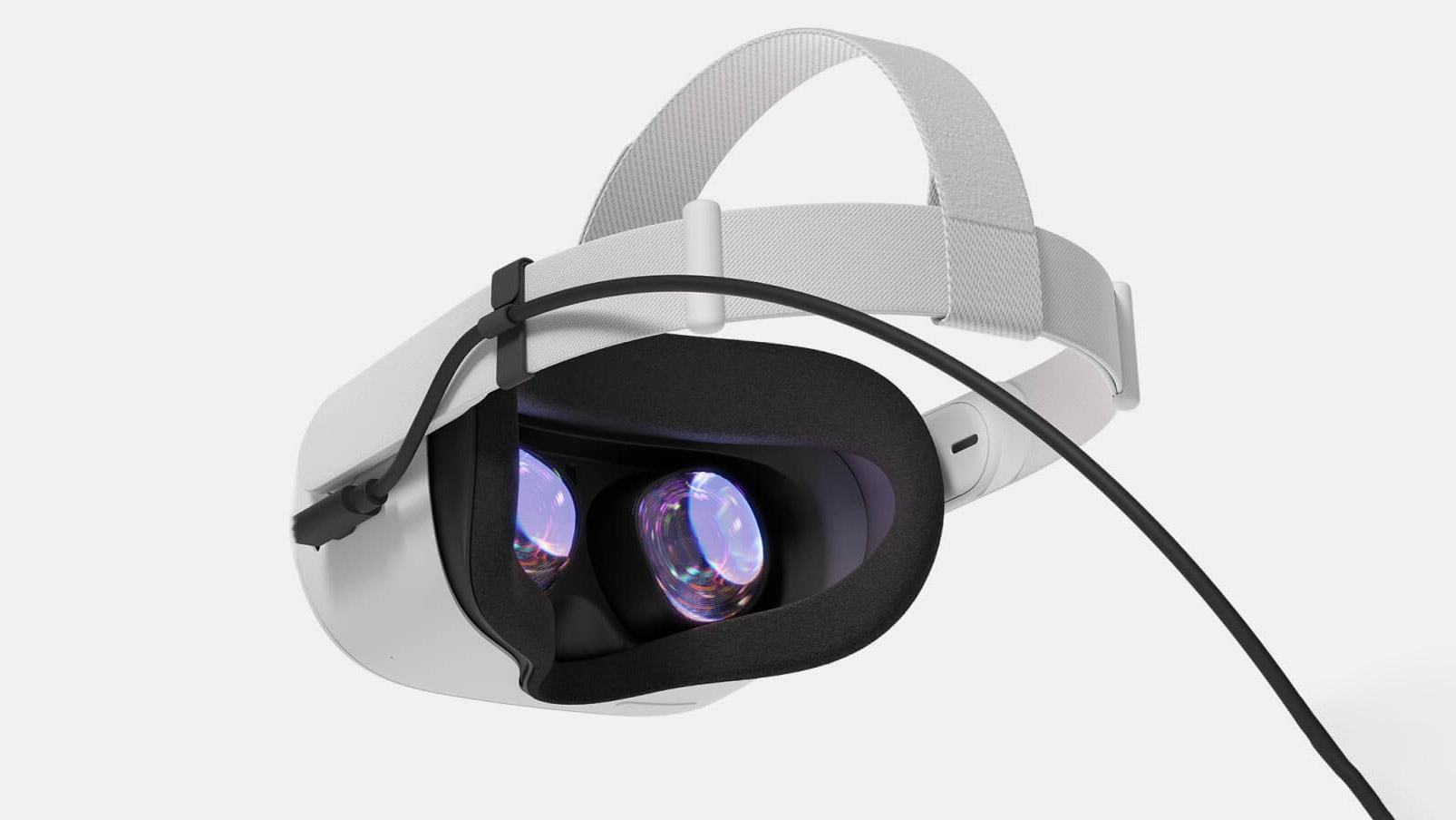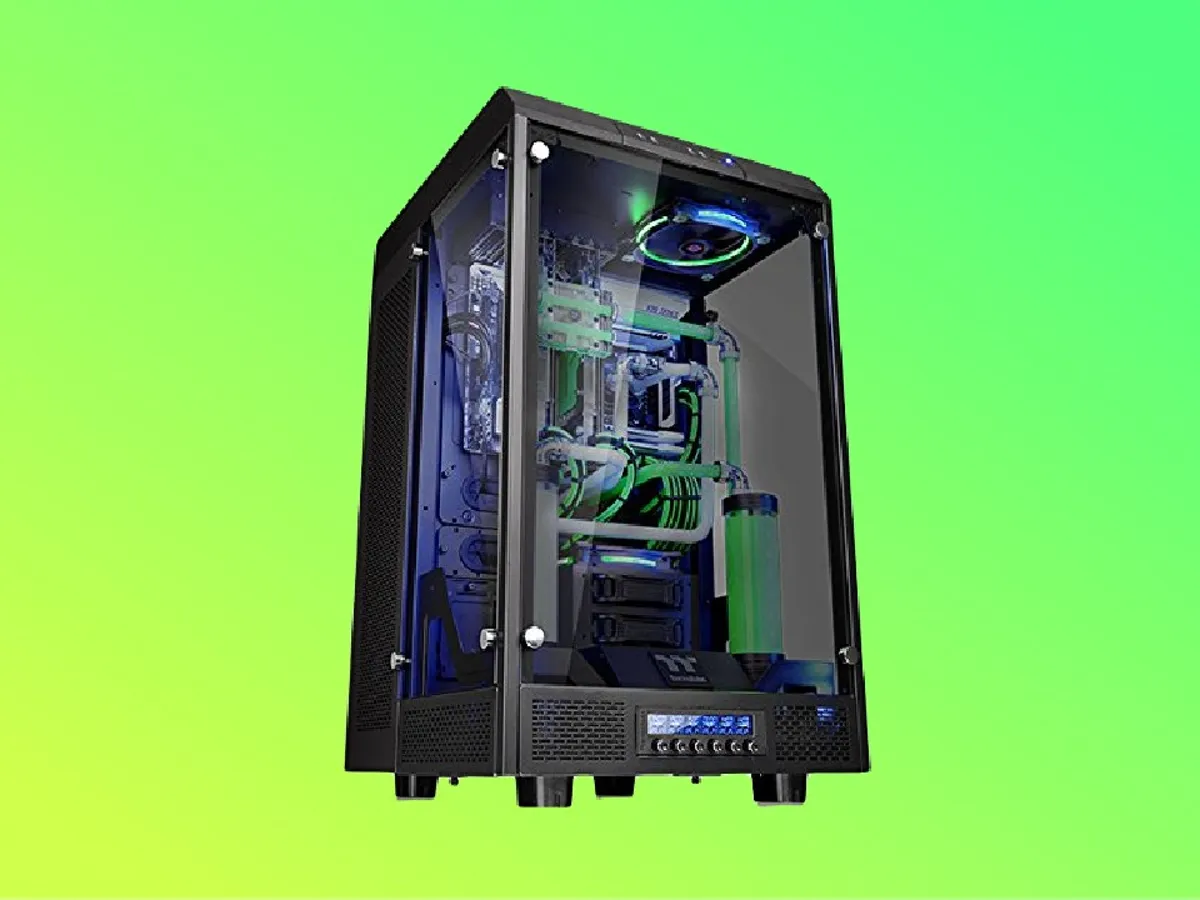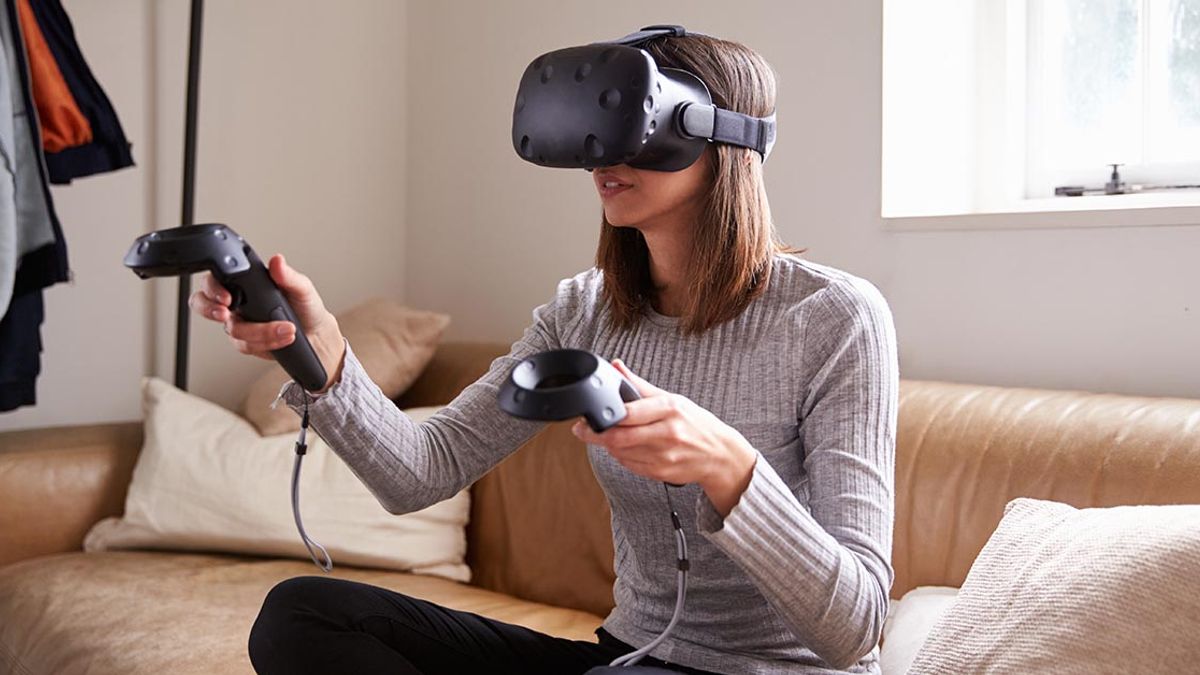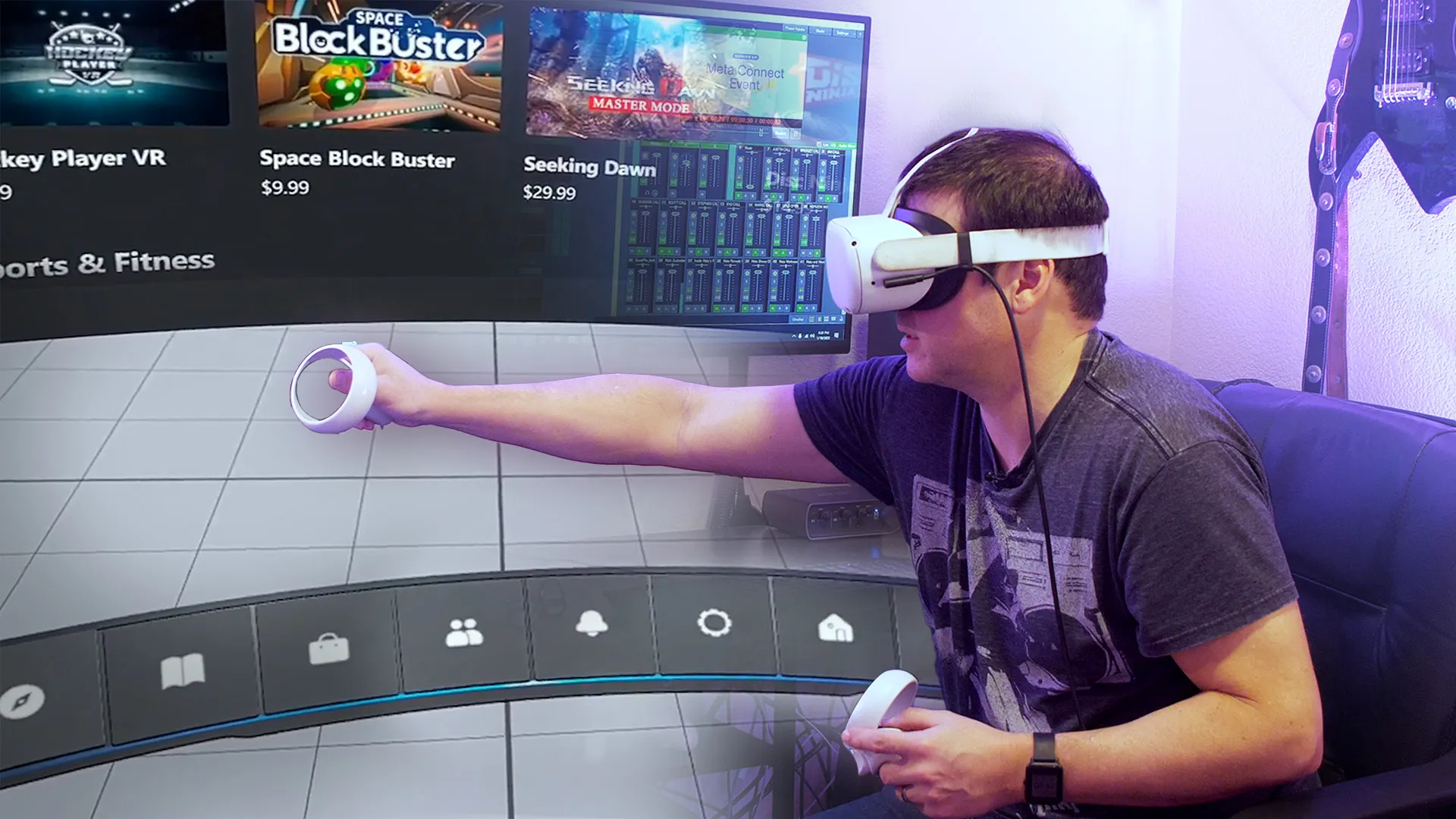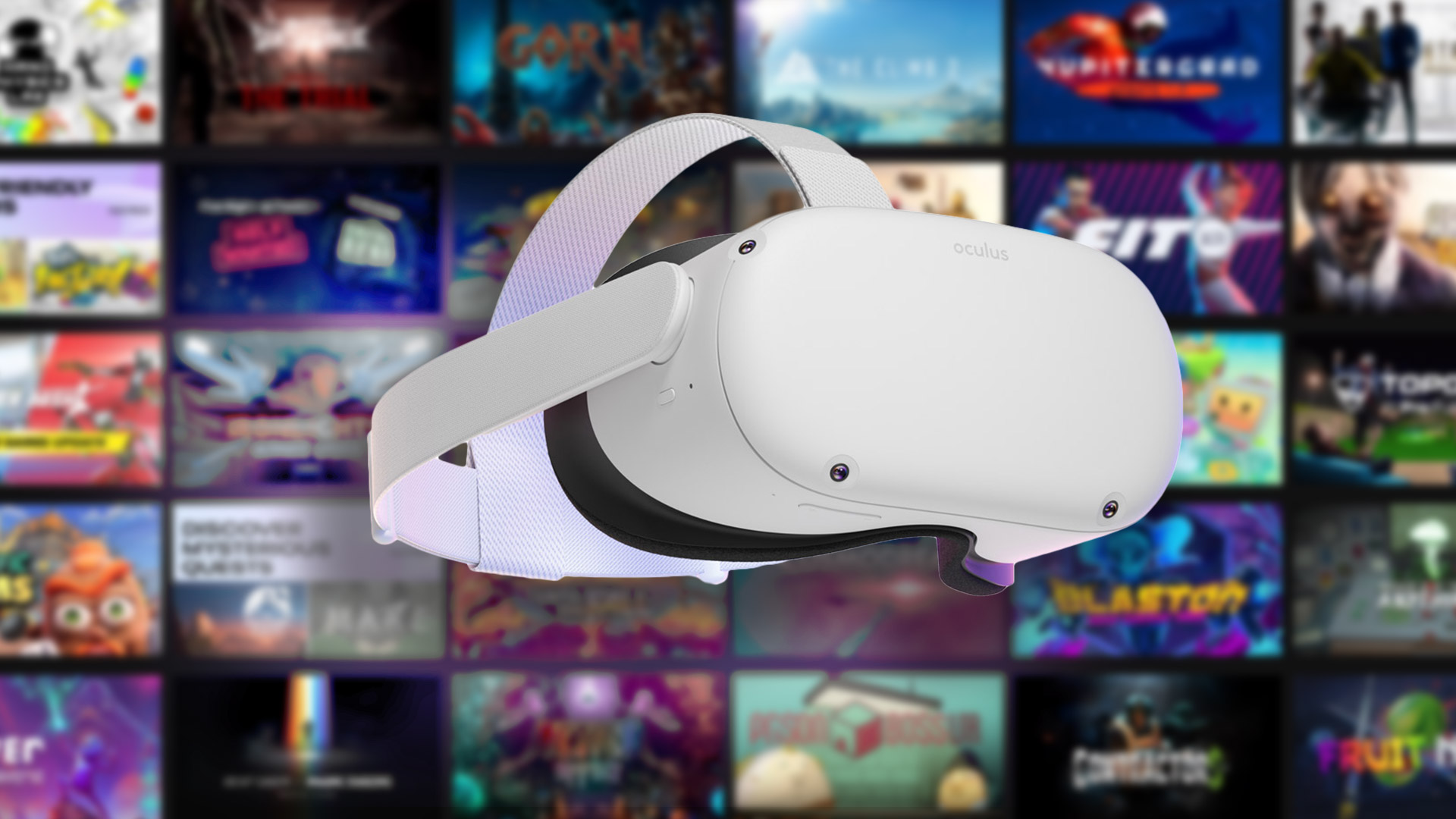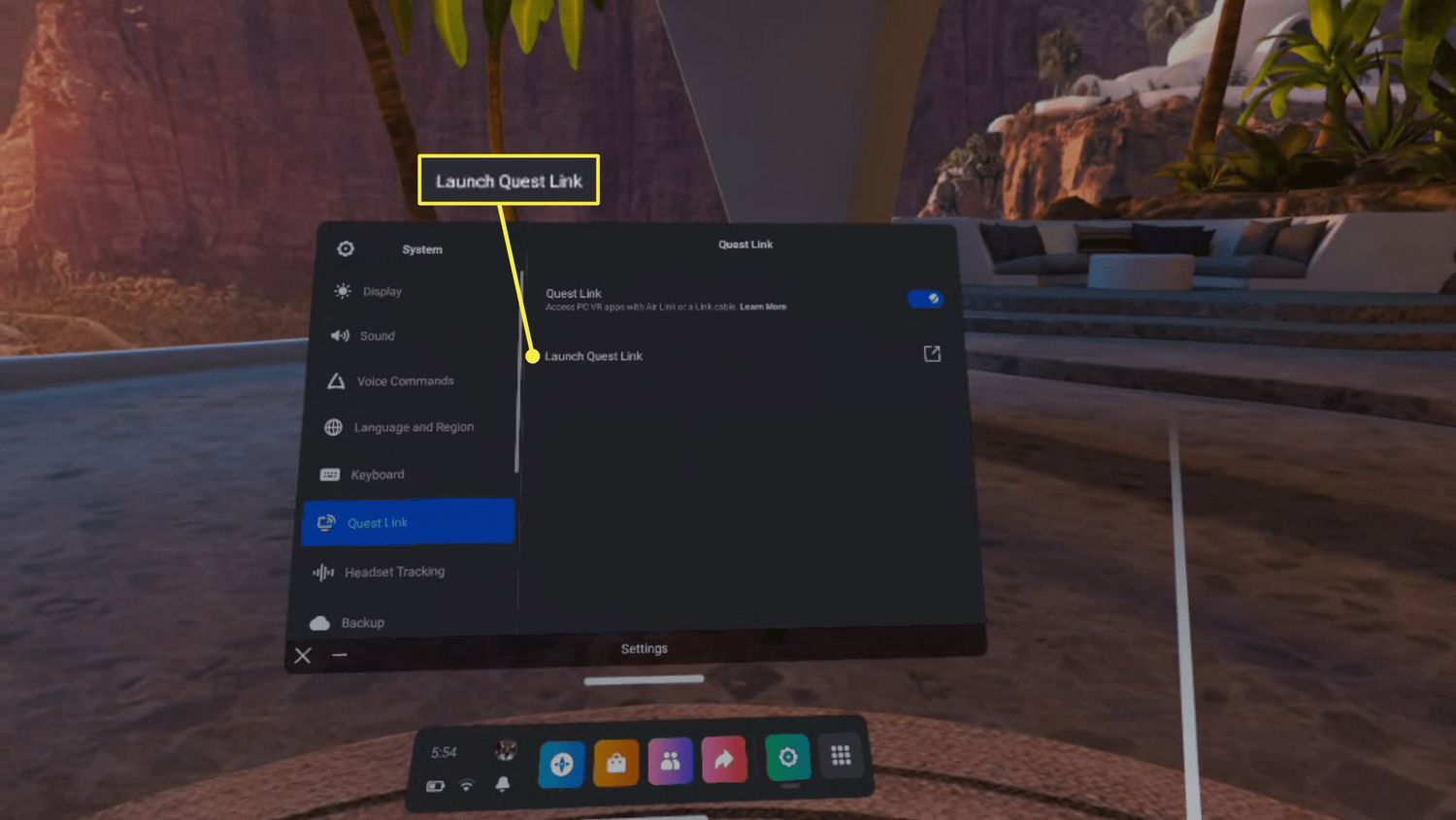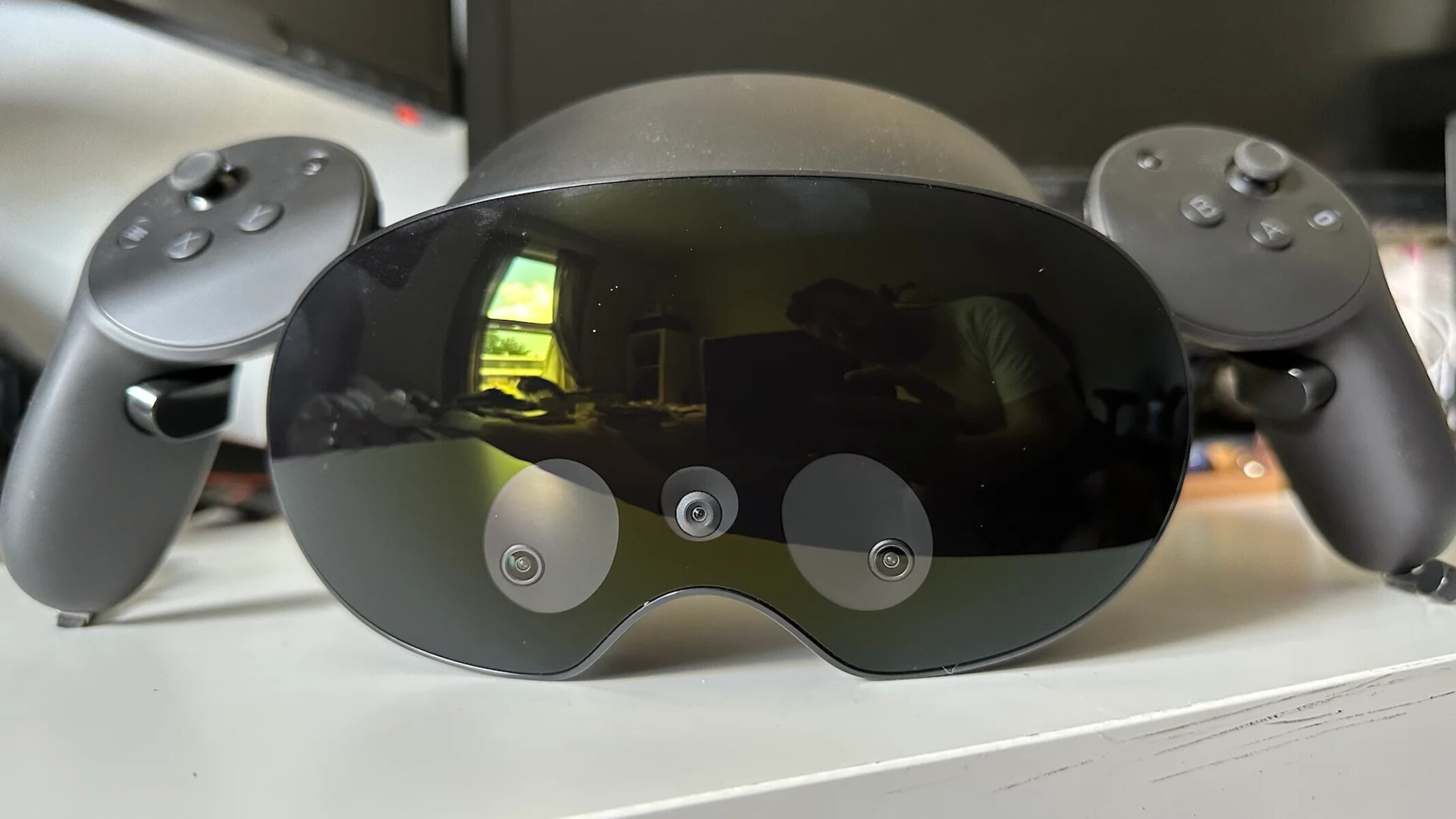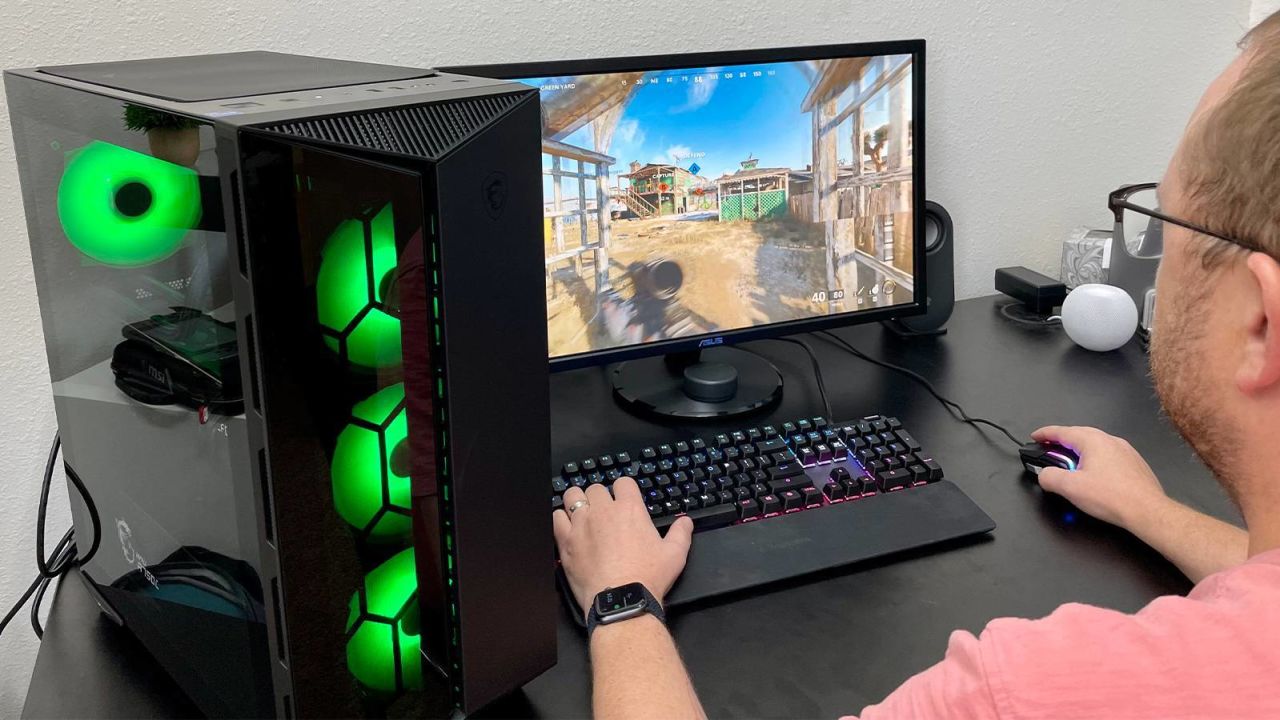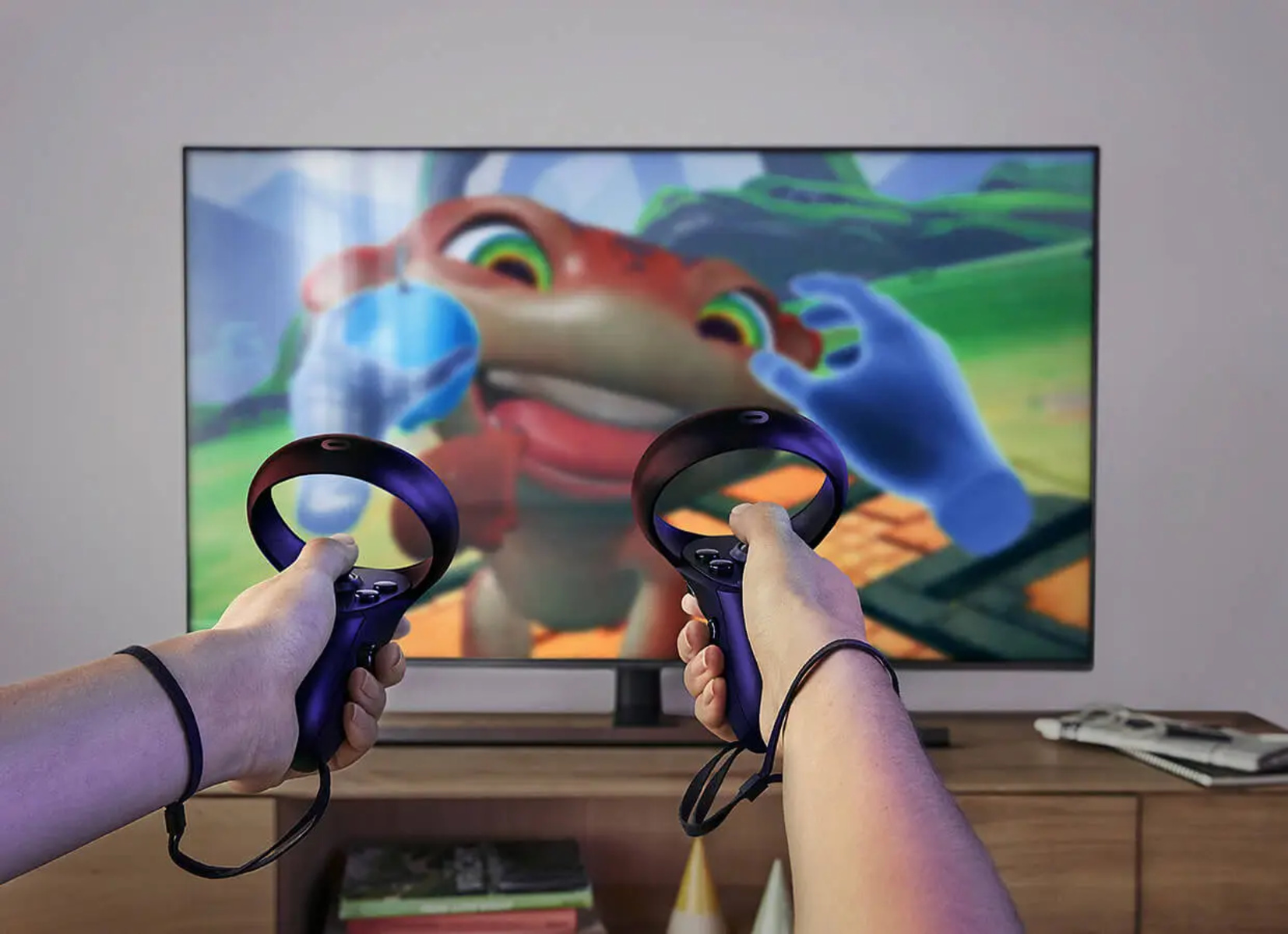Introduction
Welcome to the exciting world of virtual reality with the Oculus Quest 2! This revolutionary headset offers a seamless and immersive experience, allowing users to step into virtual worlds with stunning graphics and realistic gameplay. However, to truly unlock the potential of the Oculus Quest 2, having the right graphics card is essential. In this article, we will explore the importance of a graphics card for the Oculus Quest 2 and provide some recommendations to help you make an informed decision about which graphics card is best suited for your needs.
The Oculus Quest 2 is a standalone virtual reality headset that provides wireless freedom and a vast library of games and experiences. It boasts a high-resolution display, advanced tracking capabilities, and a powerful processor, all of which contribute to an incredibly immersive virtual reality experience. However, without a capable graphics card, you may not be able to fully enjoy the breathtaking visuals and smooth gameplay that the Oculus Quest 2 has to offer.
A graphics card, also known as a GPU (Graphics Processing Unit), is responsible for rendering images, videos, and animations on your computer screen. When it comes to virtual reality, the graphics card plays a crucial role in delivering a seamless and visually stunning experience. It is responsible for processing and rendering the complex graphics required for VR games and applications at high frame rates, ensuring smooth gameplay and reducing motion sickness.
To ensure optimal performance and compatibility, Oculus has specified minimum system requirements for the Oculus Quest 2. These requirements include a compatible and up-to-date graphics card. While the minimum requirements serve as a baseline, it is generally recommended to opt for a graphics card that exceeds these requirements to fully experience the potential of the Oculus Quest 2.
When choosing a graphics card for the Oculus Quest 2, there are several factors to consider, such as performance, price, and compatibility with your existing hardware. In the following sections, we will provide some recommendations for different budget ranges to help you find the right graphics card for your specific needs and preferences.
Understanding the Oculus Quest 2
The Oculus Quest 2 is a cutting-edge virtual reality headset that takes your gaming and entertainment experience to a whole new level. With its all-in-one design, you can immerse yourself in virtual worlds without the need for a gaming PC or additional external sensors. The headset comes equipped with a high-resolution display, built-in speakers, and touch controllers, providing an intuitive and immersive VR experience.
One standout feature of the Oculus Quest 2 is its versatility. It allows you to easily switch between virtual reality gaming, social experiences, and even productivity apps. Whether you want to explore fantasy landscapes, engage in competitive multiplayer games, or attend virtual concerts, the Oculus Quest 2 offers a wide range of experiences to suit your interests.
The headset is powered by a Qualcomm Snapdragon XR2 processor, which provides smooth performance and efficient power consumption. It also supports 6 degrees of freedom (6DoF) tracking, allowing you to move freely in your virtual environment. This level of tracking precision enhances the immersion and realism of your VR experiences.
Another significant advantage of the Oculus Quest 2 is its wireless design. Being untethered from a PC or console gives you the freedom to move around and eliminates the hassle of dealing with cables. This wireless experience enhances comfort and makes it easier to fully engage in VR games and activities.
In addition, the Oculus Quest 2 offers a wide variety of games and apps through its Oculus Store. From adrenaline-pumping action games to relaxing puzzle experiences, there is something for everyone. You can also access popular VR titles from other platforms by connecting your Oculus Quest 2 to a PC using the Oculus Link cable.
Furthermore, the headset features a passthrough mode called Oculus Passthrough, which allows you to see the real world without taking off the headset. This feature comes in handy when you need a quick break or want to interact with your surroundings without fully exiting the virtual reality environment.
Overall, the Oculus Quest 2 delivers a seamless and immersive virtual reality experience, making it an excellent choice for both casual gamers and VR enthusiasts. Its easy setup, wireless functionality, and extensive content library make it a popular option for those looking to delve into the world of virtual reality.
Importance of a Graphics Card for Oculus Quest 2
The graphics card is a crucial component when it comes to getting the most out of the Oculus Quest 2 experience. It plays a pivotal role in delivering stunning visuals, smooth gameplay, and overall performance in virtual reality. Here are some reasons why a capable graphics card is important for the Oculus Quest 2:
1. Rendering Realistic Graphics: The Oculus Quest 2 relies on the graphics card to render high-resolution, detailed 3D graphics in real-time. With a powerful graphics card, you can enjoy lifelike environments, realistic textures, and eye-catching visual effects that enhance the immersion and make you feel truly present in the virtual world.
2. Smooth Performance: Virtual reality requires rendering two stereoscopic images simultaneously, one for each eye, at a high frame rate to maintain a smooth and seamless experience. A capable graphics card ensures that demanding VR games and applications can run smoothly at the recommended frame rates of 72 or 90 frames per second, reducing the risk of motion sickness and enhancing overall comfort.
3. Reduced Latency: The graphics card also plays a role in reducing latency, which refers to the time it takes for the system to respond to your inputs. A high-performance graphics card can minimize latency, resulting in a more immediate and responsive virtual reality experience. This is crucial for fast-paced VR games or scenarios that require quick reactions.
4. Compatibility with VR Technologies: Virtual reality is a rapidly evolving technology, and new features and advancements are constantly being introduced. A capable graphics card ensures compatibility with the latest VR technologies, such as real-time ray tracing or advanced shading techniques, allowing you to experience the full potential of cutting-edge VR experiences.
5. Future-Proofing: Investing in a powerful graphics card for the Oculus Quest 2 not only enhances your current VR experience but also future-proofs your setup. As VR games and applications become more demanding, having a graphics card that exceeds the minimum requirements ensures that you can enjoy upcoming VR content without the need for immediate upgrades.
Overall, a capable graphics card is essential for unlocking the full potential of the Oculus Quest 2. It ensures stunning visuals, smooth performance, reduced latency, and compatibility with the latest VR technologies. By choosing a graphics card that meets or exceeds the recommended specifications, you can enjoy a truly immersive and unforgettable virtual reality experience.
Minimum System Requirements for Oculus Quest 2
Before delving into the world of virtual reality with your Oculus Quest 2, it is crucial to ensure that your system meets the minimum requirements specified by Oculus. These requirements ensure that your PC or laptop is capable of handling the processing and graphics demands of virtual reality. Here are the minimum system requirements for the Oculus Quest 2:
1. Operating System: The Oculus Quest 2 is compatible with Windows 10 and some versions of macOS. Ensure that your system is running the supported operating system for seamless compatibility.
2. Processor: The minimum processor requirement is an Intel i5-4590/AMD Ryzen 5 1500X or equivalent. This ensures that your system is equipped with a processor that can handle the demanding graphics and calculations required for virtual reality experiences.
3. Graphics Card: The graphics card is a crucial component for smooth visuals and performance in virtual reality. The minimum requirement for the Oculus Quest 2 is an NVIDIA GTX 970 / AMD Radeon R9 290 or equivalent. It is important to note that this is the minimum requirement, and opting for a higher-performance graphics card will enhance your VR experience.
4. Memory (RAM): The minimum RAM requirement for the Oculus Quest 2 is 8GB. Having sufficient memory ensures that your system can handle the memory-intensive processes required for virtual reality, providing a smooth and responsive experience.
5. USB Ports: The Oculus Quest 2 uses USB ports for connectivity and charging. Ensure that your system has an available USB 3.0 port for connecting the Oculus Quest 2 and a USB 2.0 port for the Oculus Link cable (if you plan to connect your headset to a PC for accessing PC VR content).
6. Storage: The Oculus Quest 2 comes with varying storage capacities, but it is recommended to have at least 128GB of available storage on your PC or laptop to download and install VR games and applications.
Meeting the minimum system requirements ensures that your system can handle basic virtual reality experiences on the Oculus Quest 2. However, it is worth noting that opting for higher specifications, such as a more powerful graphics card or additional RAM, will provide a smoother and more immersive VR experience, especially for graphically intensive games and applications.
Before purchasing or upgrading your system, it is always a good idea to double-check the official Oculus website for any updates or changes to the minimum system requirements. By ensuring that your system meets or exceeds these requirements, you can enjoy the full potential of the Oculus Quest 2 and dive into the captivating world of virtual reality with ease.
Recommended Graphics Cards for Oculus Quest 2
While meeting the minimum system requirements for the Oculus Quest 2 ensures basic functionality, opting for a recommended graphics card will significantly enhance your virtual reality experience. A capable graphics card ensures smooth gameplay, realistic visuals, and improved performance. Here are some recommended graphics cards for the Oculus Quest 2:
1. NVIDIA GeForce GTX 1660 Super: The GTX 1660 Super is an excellent choice for the Oculus Quest 2, offering a balance of price and performance. It delivers smooth VR experiences, handles demanding games with ease, and provides excellent value for its price range.
2. NVIDIA GeForce RTX 2060: The RTX 2060 is a step up from the GTX 1660 Super, offering more power and features. With real-time ray tracing capabilities and improved performance, the RTX 2060 delivers a visually stunning and immersive VR experience.
3. NVIDIA GeForce RTX 3060 Ti: For those who want premium performance, the RTX 3060 Ti is an excellent choice. It provides exceptional graphics rendering, enabling high-quality visuals and smooth gameplay in even the most demanding VR titles.
4. AMD Radeon RX 5700 XT: If you prefer AMD graphics cards, the RX 5700 XT is a strong contender. It offers excellent performance, efficient power consumption, and competitive pricing, making it a popular choice for VR enthusiasts.
5. AMD Radeon RX 6800: The RX 6800 is a high-performance graphics card that delivers stunning visuals and smooth VR experiences. With its advanced features and power, it is capable of handling VR games and applications with ease.
It is important to note that the above graphics cards are recommendations and may vary based on individual preferences, budget, and availability. When choosing a graphics card for the Oculus Quest 2, consider factors such as compatibility with your system, desired performance level, and budget constraints.
Remember to also check the official Oculus website or consult with the manufacturer to ensure compatibility and optimal performance with the Oculus Quest 2. It is recommended to exceed the minimum requirements if possible to future-proof your VR setup and enjoy a more immersive and visually impressive virtual reality experience.
Investing in a recommended graphics card for the Oculus Quest 2 ensures that you can fully unlock the potential of your virtual reality headset, providing you with breathtaking visuals and smooth gameplay that truly immerse you in the virtual world.
Budget-friendly Graphics Cards for Oculus Quest 2
If you’re looking for a budget-friendly option to enhance your Oculus Quest 2 experience, there are several graphics cards available that offer a good balance of performance and affordability. These graphics cards can provide smooth VR gameplay and deliver satisfactory visuals without breaking the bank. Here are some budget-friendly graphics cards for the Oculus Quest 2:
1. NVIDIA GeForce GTX 1650 Super: The GTX 1650 Super is a budget-friendly option that still packs a punch. It offers decent performance for VR gaming at an affordable price. While it may not deliver the highest settings or graphics details, it can handle most VR games and applications with relative ease.
2. AMD Radeon RX 5500 XT: The RX 5500 XT is another budget-friendly graphics card that is suitable for the Oculus Quest 2. It provides a good balance of performance and affordability, making it a solid choice for those on a tight budget. While it may not excel in demanding VR titles, it can deliver a smooth gaming experience for less demanding VR games.
3. NVIDIA GeForce GTX 1660: The GTX 1660 is a slightly older but still capable graphics card that offers good value for its price. It provides a decent level of performance for VR gaming and can handle most VR titles without any issues. While it may not have the latest features or cutting-edge technology, it is a reliable option for those looking for a budget-friendly graphics card.
4. AMD Radeon RX 5600 XT: The RX 5600 XT is a mid-range graphics card that offers good performance at an affordable price. It can handle VR games and applications with ease, delivering a smooth and enjoyable virtual reality experience. It provides a balance between price and performance, making it an attractive option for budget-conscious gamers.
5. NVIDIA GeForce GTX 1660 Ti: The GTX 1660 Ti is another budget-friendly option that offers solid performance in VR gaming. It provides a step up in performance compared to the GTX 1660, allowing for smoother gameplay and better visuals. While it may not have the most advanced features, it can deliver a satisfactory VR experience for users on a budget.
These budget-friendly graphics cards offer a cost-effective solution to enhance your Oculus Quest 2 experience without breaking your budget. They provide a good balance of performance and affordability, allowing you to enjoy VR gaming and applications without compromising on quality. Consider your specific needs, desired performance level, and budget constraints when choosing a budget-friendly graphics card for your Oculus Quest 2 setup.
Remember to check the official Oculus website or consult with the manufacturer to ensure compatibility with the Oculus Quest 2. While these budget-friendly options may not provide the same level of performance as higher-end graphics cards, they can still provide an enjoyable and immersive virtual reality experience at an affordable price.
Premium Graphics Cards for Oculus Quest 2
If you’re seeking the ultimate virtual reality experience with your Oculus Quest 2 and are willing to invest in top-of-the-line hardware, there are several premium graphics cards available that offer exceptional performance and cutting-edge features. These graphics cards can handle the most demanding VR games and applications, providing stunning visuals and immersive gameplay. Here are some premium graphics cards for the Oculus Quest 2:
1. NVIDIA GeForce RTX 3080: The RTX 3080 is a high-end graphics card that delivers unparalleled performance in VR gaming. With its advanced architecture, real-time ray tracing capabilities, and powerful rendering capabilities, it can handle even the most graphically intensive VR games with ease. It offers a smooth and immersive VR experience, pushing the boundaries of visual quality and realism.
2. AMD Radeon RX 6900 XT: The RX 6900 XT is AMD’s flagship graphics card that offers top-of-the-line performance for VR gaming. With its powerful GPU and advanced features, it delivers exceptional graphics fidelity and smooth gameplay. It can handle the most demanding VR titles, providing an immersive and visually stunning virtual reality experience.
3. NVIDIA GeForce RTX 3090: The RTX 3090 is the ultimate graphics card for VR enthusiasts who demand the best performance and visuals. With its massive GPU memory, real-time ray tracing capabilities, and exceptional rendering power, it can handle VR games and applications at the highest settings and resolutions. It offers an unparalleled level of immersion, delivering lifelike visuals and smooth gameplay.
4. AMD Radeon RX 6800 XT: The RX 6800 XT is a premium graphics card that delivers outstanding performance and visual quality in VR gaming. It offers advanced features such as hardware-accelerated ray tracing and high-speed rendering, providing a highly immersive and realistic VR experience. It is capable of running even the most demanding VR titles without compromising on performance.
5. NVIDIA GeForce RTX 3070: The RTX 3070 is a high-performance graphics card that offers excellent value for its price. It provides a balance of price and performance, making it an attractive option for VR enthusiasts who want a premium experience without breaking the bank. It can handle VR games and applications at high settings, delivering smooth and immersive gameplay.
These premium graphics cards offer the best performance and features for the Oculus Quest 2, allowing you to experience virtual reality at its finest. They provide the highest level of visual fidelity, smoothness, and immersion, ensuring that you can fully immerse yourself in the virtual worlds of your favorite VR games and applications.
When considering a premium graphics card for the Oculus Quest 2, it is important to ensure that your system meets the power and cooling requirements of these high-end cards. Additionally, checking the official Oculus website or consulting with the manufacturer is recommended to ensure compatibility and optimal performance.
Investing in a premium graphics card for the Oculus Quest 2 guarantees an unparalleled VR experience, where every detail comes to life and every moment feels truly immersive. It allows you to experience virtual reality in all its glory, pushing the boundaries of what is possible in the virtual world.
Factors to Consider when Choosing a Graphics Card
When selecting a graphics card for your Oculus Quest 2, there are several important factors to consider to ensure that you choose the right one for your needs and preferences. These factors will help you make an informed decision and get the most out of your virtual reality experience. Here are some key factors to consider when choosing a graphics card:
1. Performance: The performance of a graphics card is crucial in delivering smooth gameplay and visually stunning graphics. It is important to consider the card’s processing power, memory, and clock speed, as these factors play a significant role in its performance in VR gaming. Look for a graphics card that meets or exceeds the recommended specifications for the Oculus Quest 2 to ensure optimal performance.
2. Price and Budget: Determine your budget for a graphics card and find one that offers the best value for your money. While high-end graphics cards may offer exceptional performance, they also come with a higher price tag. Consider your budget and prioritize features and performance that are most important to you to strike the right balance between cost and performance.
3. Compatibility: Ensure that the graphics card you choose is compatible with your system, including the motherboard, power supply, and available slots. Check the physical dimensions and power requirements of the card to ensure that it can fit into your system and has sufficient power supply for smooth operation.
4. VR Requirements: Verify that the graphics card meets the minimum requirements for the Oculus Quest 2 or exceeds them for a better VR experience. Consider the resolution and frame rate of the headset and choose a graphics card that can deliver smooth and immersive gameplay at the recommended settings.
5. Cooling and Power Consumption: Graphics cards can generate a significant amount of heat, so it’s essential to consider their cooling capabilities. Look for cards with efficient cooling solutions, such as multiple fans or liquid cooling, to prevent overheating. Additionally, take into account the power consumption of the graphics card and ensure that your power supply can handle the load.
6. Future-Proofing: Consider future advancements in VR technology and how long you want your graphics card to remain relevant. Investing in a more powerful graphics card that exceeds the current requirements can provide a longer lifespan and ensure compatibility with upcoming VR games and applications.
7. Brand and Warranty: Research various brands and their reputation for graphics cards. Consider factors such as customer support, reliability, and warranty coverage. Choosing a reputable brand with a solid warranty can give you peace of mind and ensure that you have support in case of any issues.
By considering these factors, you can make an informed decision and choose a graphics card that not only meets the requirements of the Oculus Quest 2 but also suits your needs and budget. Remember to research and compare different cards, read reviews, and consult with experts to ensure that you make the best choice for an optimal VR experience.
Conclusion
Choosing the right graphics card for your Oculus Quest 2 is crucial for ensuring a smooth, immersive, and visually stunning virtual reality experience. Whether you’re on a budget or seeking premium performance, there are graphics card options available that cater to your specific needs.
Understanding the Oculus Quest 2 and its capabilities is the first step in determining the importance of a graphics card. The Oculus Quest 2’s wireless design, high-resolution display, and advanced tracking capabilities rely on a capable graphics card to deliver the best possible VR experience.
Considering the minimum system requirements is essential to ensure compatibility and basic functionality. However, opting for a recommended graphics card will significantly enhance your VR experience, providing smoother gameplay, realistic visuals, and reduced latency.
For those on a budget, there are budget-friendly graphics cards available that offer decent performance at an affordable price. These cards can provide satisfactory visuals and smooth gameplay, allowing you to enjoy VR experiences without breaking the bank.
On the other hand, premium graphics cards deliver exceptional performance and cutting-edge features, providing the ultimate VR experience. These high-end cards can handle the most demanding VR games and applications, delivering stunning visuals and immersive gameplay.
When choosing a graphics card, it is important to consider factors such as performance, price, compatibility, cooling, power consumption, and future-proofing. By weighing these factors, you can make an informed decision that suits your specific needs, budget, and desired level of VR immersion.
Always ensure to check the official Oculus website, consult with manufacturers, and read reviews to verify compatibility and optimal performance for the Oculus Quest 2. Taking the time to research and compare different graphics cards will ensure that you make the right choice to enhance your VR experience.
In summary, the graphics card you choose for your Oculus Quest 2 is a key component in delivering a remarkable virtual reality experience. Whether you opt for a budget-friendly option or invest in a premium graphics card, make sure to select one that meets your requirements and enhances your journey into the captivating world of virtual reality.







